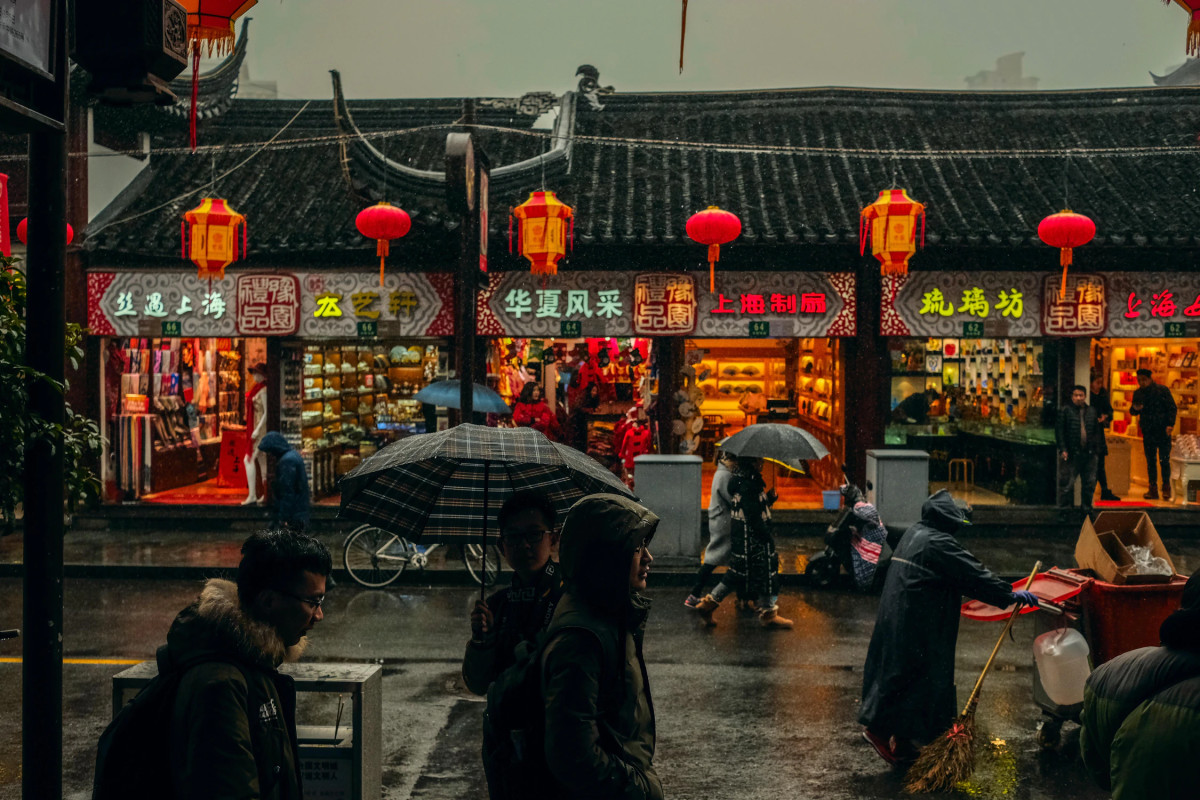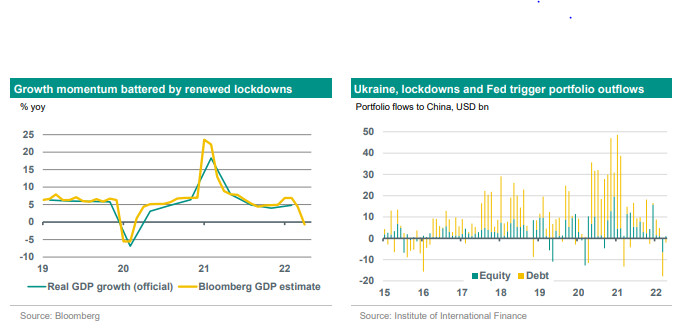China - Something's gotta give

Broadening of lockdowns in March/April hits economic activity and impacts sentiment. We have cut our 2022 growth forecast further, to 4.7% from 5.0%. We expect growth momentum to improve in 2H-22, but risks rmain as trade-off is hardening.
The broadening of lockdowns in March/April is making itself felt, highlighting the rising costs from ongoing strict Covid-19 policies. In line with our expectations, the April data were even weaker than the March data. Industrial production contracted by 2.9% yoy (7.1% mom), with manufacturing hit by bottlenecks in production and transport, adding to distress in global supply chains. Retail sales shrank by 11.1% yoy (0.7% mom), with car sales and catering particularly weak. Property sales also plunged. Fixed investment slowed to 6.8% yoy ytd, with property investment contracting. The unemployment rate rose to 6.1%, close to the peak seen after the initial Covid-19 shock. The PMIs and foreign trade data for April also came in much weaker. Bloomberg’s GDP estimate for April points to -0.7% yoy, the first negative reading since the -5.5% yoy in February 2020. We adjusted our near-term growth forecasts, and cut our annual growth forecast for 2022 to 4.7%, from 5.0%.
We expect growth momentum to improve in the second half of this year, but risks from Covid-19 policies remain
China’s nationwide lockdown intensity started to ease in recent weeks, despite ongoing struggles in eg. Shanghai and Beijing. We expect a gradual reopening going forward, within the framework of strict ‘dynamic clearing’ Covid-19 policy. We also assume a further step-up of targeted fiscal stimulus, piecemeal monetary easing and a relaxation in macroprudential policies including for real estate. Recent State Council meetings hint in that direction too, with Beijing so far sticking to its 2022 growth target of 5.5%. Although we expect momentum to improve in 2H22, our 2022 growth forecast is around 1pp below Beijing’s target. The government’s pledge for vigilance on the pandemic front makes the recovery vulnerable to pandemic flare-ups and prolonged lockdowns. For this reason we are also looking at alternative scenarios (see main article).

The trade-off between maintaining strict Covid-19 policies and safeguarding economic growth is hardening
Last year, China tweaked its Covid-19 policy from centralised “zero tolerance” to decentralised “dynamic clearing”. This meant that outbreaks were met with strict containment measures at the very local level, reducing the overall macro fallout. However, with the spread of the contagious Omicron variant, this approach has become more difficult, illustrated by rising cases and a broadening of lockdowns in March/April. The CCP – profiled itself as a ‘champion of pandemic control’ pointing to low mortality rates – looks reluctant to fundamentally ease Covid-19 policy at this stage, as that may result in hospital capacity issues and a rising death toll in the run-up to the National Party Congress in November. While the overall vaccination rate has been ramped up, the elderly are lagging behind. Beijing’s stance is also affecting local governments, who are implementing restrictions at early stages of outbreaks; developments in large cities such as Xi’an and Shanghai show that dynamic clearing is not working if measures are taken too late. Although Beijing is keen to step up policy support, it has become clear that the trade-off between maintaining strict Covid-19 policies and safeguarding growth has hardened. This has also contributed to confidence issues among consumers, producers and (foreign) investors.
